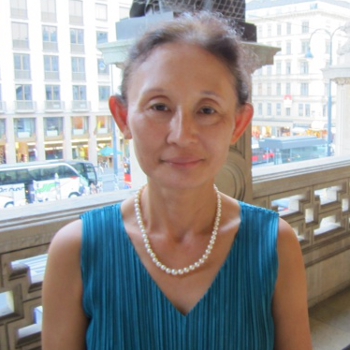A Christmas fixture at many opera companies, Humperdinck’s late 19th century opera Hänsel und Gretel, based on Brothers Grimm’s fairy tale, is as much an enchanting musical realization of the tale as an orchestral masterpiece. The orchestra dominates the opera beginning with a long overture. A number of musical interludes seamlessly move the action from a little house where the brother and sister live with their hard-working but struggling parents, to the woods where they are lost, and to the witch’s gingerbread house. Humperdinck’s musical writing is clearly informed by his teacher/mentor Richard Wagner, as there are many references to the latter’s music, most notably Die Meistersinger which is, by coincidence, being performed at the Met at the moment. And yet the opera also contains unique gems of its own, such as the children’s evening prayer, brief solos by the Sandman, the Dew Fairy and the Witch, and the final chorus of the parents and the children. There are musical passages that anticipate Richard Strauss’ music a few decades later. It is musically extremely sophisticated, appealing as much to the adult audience as the young children.
The Met’s production by Richard Jones dating back to 2007 does not sugarcoat the rather sinister nature of the Grimms’ tale. The children are scolded and sent to the woods on their own as punishment for their mischiefs. They commit a murder, albeit of a wicked witch, by a rather gruesome method of burning her alive in an oven. The overture is played in front of a screen painted with a large white plate with a knife and a fork. This painting becomes increasingly unnerving as the story moves, first a large red open mouth with a protruding tongue indicating the witch’s avaricious appetite, then an empty plate with red smears on it, and finally a broken plate with the destruction of the witch. The set is fairly simple; the family kitchen in a large platformed frame, the forest that doubles as a fantasy banquet hall/kitchen with a fish-headed butler and chefs with enormous heads, and the witch’s industrial-looking open kitchen are all not overly cluttered, and serve well to tell the story in a straightforward manner.
The Met assembled a strong ensemble of singers for the revival. Aleksandra Kurzak sang and acted Gretel as a strong-willed and resourceful girl with her clear and penetrating soprano. Her English diction was excellent and every word was intelligible. Christine Rice, making a Met debut as Hansel, brought a rich and nuanced mezzo to the role, although her high notes were sometimes marred by heavy vibrato. The two made a delightful singing pair, and their evening prayer in the woods was a musical highlight. As the children’s parents, Dwayne Croft and Michaela Martens were both excellent in singing the rather brief but vocally demanding roles. Croft was particularly impressive with his deep and sonorous voice which communicated the character’s pathetic pride. His English diction was exemplary. Martens’ large, rich voice pierced the heavy orchestra, as she portrayed a frustrated and bitter mother.
The role of the witch is written for a mezzo-soprano but the Met again chose to use a tenor as was often the case in the past. Dressed and wigged as a dumpy old woman, Robert Brubaker seemed to relish the opportunity to portray a wicked but also camp character, and moved around the stage throwing sweets and other cooking ingredients while singing with his full-throated and voluminous tenor. Carolyn Sproule, in her Met debut, impressed with her quiet but dignified and arresting singing as the Sandman. As the Dew Fairy, dressed as a maid with an apron and a small wing on the back, Ying Fang’s soprano was bright and chirpy. The hard working children’s chorus (many of them were in last evening’s Meistersinger performance that ended gone midnight) was again impressive in the final scene of quiet prayer and thanksgiving for their resurrection.
Sir Andrew Davis led a large orchestra with a sure hand that highlighted both the sumptuous ensemble of the Met Orchestra as well as its individual instruments. The overture began with a hush as the dreamy first notes of the horn are heard, soon joined by the strings. The pace was steady as major themes and motifs of the opera are introduced one by one. Volume was gradually increased as more instruments joined and the motifs became intertwined to bring on a triumphant and joyous end. The conductor seemed to know when to push the volume and when to pull back, and when to emphasize particular instruments, especially the brass, to create a magical and entrancing experience of the music. The music of the opera was not only consistently and beautifully performed, but the clarity of the performance made it possible to appreciate Humperdinck’s contribution as a transitional figure, bridging Richard Wagner to Richard Strauss, while creating a remarkable musical language of his own. This Met revival honors his music with a vivid performance by the fine orchestra and singing ensemble, in a witty production that does not shrink away from a sinister aspect of the fairy tale.




